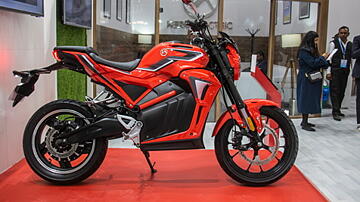Quality EVs are not cheap anywhere.
On the face of it, a battery, a controller, some motors and wires should be cheaper than an internal combustion engine, with valves, chains, belts, pistons, a gearbox, shafts, and hoses and pumps connecting to the fuel.
But the rest of it - suspension, lights, interiors, air conditioning, braking (often regenerative in EVs), and wheels, tyres (made from petroleum products) are all the same.
So despite the relative simplicity of electric vehicles, they’re not that bereft of components to make them super cheap.
Unless, of course, we reach economies of scale so big, that the price of everything drops.
Lithium and the price on that stand in the way of EVs becoming cheap anytime soon. Whoever cracks a substitute to lithium ion batteries, and gets either a very durable battery with far more charge cycles, or energy density, this is going to remain the same.
However, it isn’t just the lithium.
Today, there are two kinds of electric two wheelers in India. Those that do not need registration and license, and those that do. Typically, it is the performance below a certain level (cannot go above 45 kmph or so) that qualifies for an exemption. These are cheaper, for many of them are really basic, use lead acid batteries, have no performance components, or too much attention to detail like handling characteristics. Indeed cheap to make. Often cheap to purchase as well.
I came across a “Flio” that is exempt from registration, that is 98,000 rupees! They claim superior battery technology though, and guarantee six years versus the big ones giving a three year unlimited kilometre warranty, like with the Ather.
I have not come across any electric motorcycle that is exempt yet. Why? Because the performance seeking motorcycle riders are unlikely to switch to electric and performance electric motorcycles are expensive to make. However, electric scooters are promising exciting performance, to say the least. This is a combination of largely urban practicality concerns, and convenience, and some style.
At the moment, none of the manufacturers could be making much money at all, despite the subsidies. It’s because they must all be recouping their investment in the infrastructure. Most of the components they import, including the lithium, aren’t cheap yet.
There is a qualitative difference in every electric vehicle component vs another. The higher performance you want, the higher the quality of components and engineering you will have to invest in. Quality always costs something more than basic functionality.


0 comments